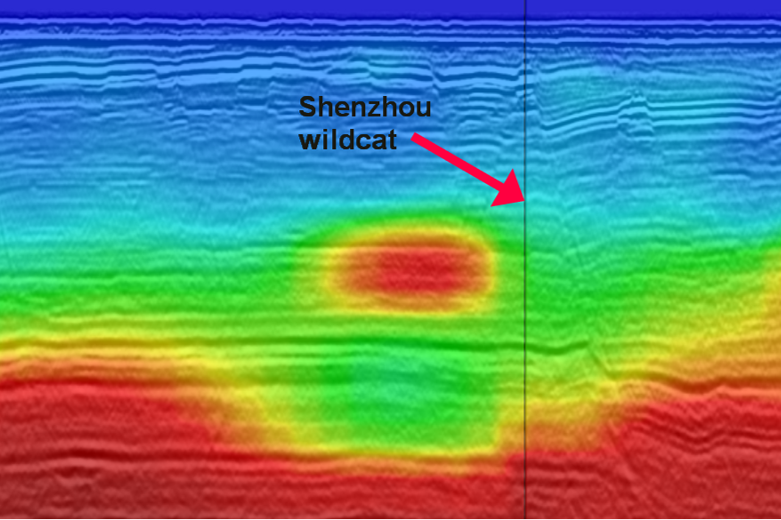Equinor is currently drilling 7322/6-1S (Shenzhou), a prospect some 40 km west of Wisting, in an area of the Bjarmeland Platform that has not been explored extensively before.
It is expected that it will reach TD within a couple of weeks. The excitement grows every day.
The targets of this wildcat are Triassic sandstones (3 members of the Snadd Fm) and Permian carbonates.
“You will not find commercial volumes when drilling on a CSEM negative”

In terms of expected volumes, Aker BP’s estimate for Shenzhou ranges from 191 to 505 MMboe (as presented during the Capital Markets Update in February this year). Lundin’s estimate is within this range; the company estimates Shenzhou to contain around 360 MMboe (as presented during the Capital Markets Update this year).
“If successful, this well will be a play opener for the Snadd formation in the area – and for a change, we are unable to dismiss the chances of finding significant amounts of hydrocarbons out of hand,” says Lodve Berre, an EM expert that has just recently left EMGS, in a LinkedIn post from last year.
Do not miss this one: “A Conversation: How Explorationists Benefit from Digitalization”
NCS Exploration – Recent Advances in Exploration Technology, May 19-20
Lead by Kine Johanne Årdal, Customer Success Director at Cognite
Panel:
Aina Juell Bugge, Lundin Energy Norway
Petter Dischington, NPD
Nicolas Satur, Aker BP
Mark Hall, Vår Energi
Richard Olstad, Pandion Energy
Too deep for the Permian
While the Permian target is outside the CSEM sensitivity range, two of the Triassic targets (a Carnian channel and a Ladinian delta in the Lower Snadd between around 1600 m and 1900 m TVD, with a combined net pay of 51 m) are suitable for the CSEM layout above the prospect.

“We can actually identify a resistive feature at the target level. Furthermore, we can also see a stronger resistive anomaly outside the target outline at a similar level as at the well location, representing a possible upside if the anomaly at Shenzhou proves to be hydrocarbon bearing,” says Berre.
Berre, however, warns us to be cautious. “The anomaly comes with several caveats,” he says, “of which the most important is the chance of a false positive this deep in the Triassic.” In the referenced article on LinkedIn, he elaborates on three other potential pitfalls.
How does CSEM perform compared to other de-risking tools? Knowing that – analysing 45 anomalies between 2008 and 2020 followed by drilling, there were no commercial discoveries, Lars Jensen, Advisor Geophysics at NPD, will moderate a panel discussion with the following topic: “An Integrated Exploration Approach to De-risking”.
Panel:
Mark Rhodes, Leading Advisor in Seismic Data Quality for Exploration at Equinor
David Poole, Senior Strategic Advisor at Vår Energi
Adriana Citlali Ramirez, Chief Geophysicist & Technology Advisor at TGS
Svein Ellingsrud, Acting CTO at AlltonNCS Exploration – Recent Advances in Exploration Technology, May 19-20
Cautiously optimistic
“While we do see an anomaly at the Lower Snadd targets level, it does seem like the extent of the anomaly is significantly smaller than the target outline.”

“With this in mind, along with the significant false positive risk, we are cautiously optimistic about this prospect and we update the chance of success slightly, while simultaneously reducing the expected volumes”.
“As clearly demonstrated by the prospects Grind, Gabriel, Sandia and Mist last year (and several other wells prior to that), you will not find commercial volumes when drilling on a CSEM negative,” Berre says.
If the well indeed proves to be hydrocarbon bearing, we are very excited about the additional prospectivity at the Snadd level in the area,” Lodve Berre concludes.
HALFDAN CARSTENS




